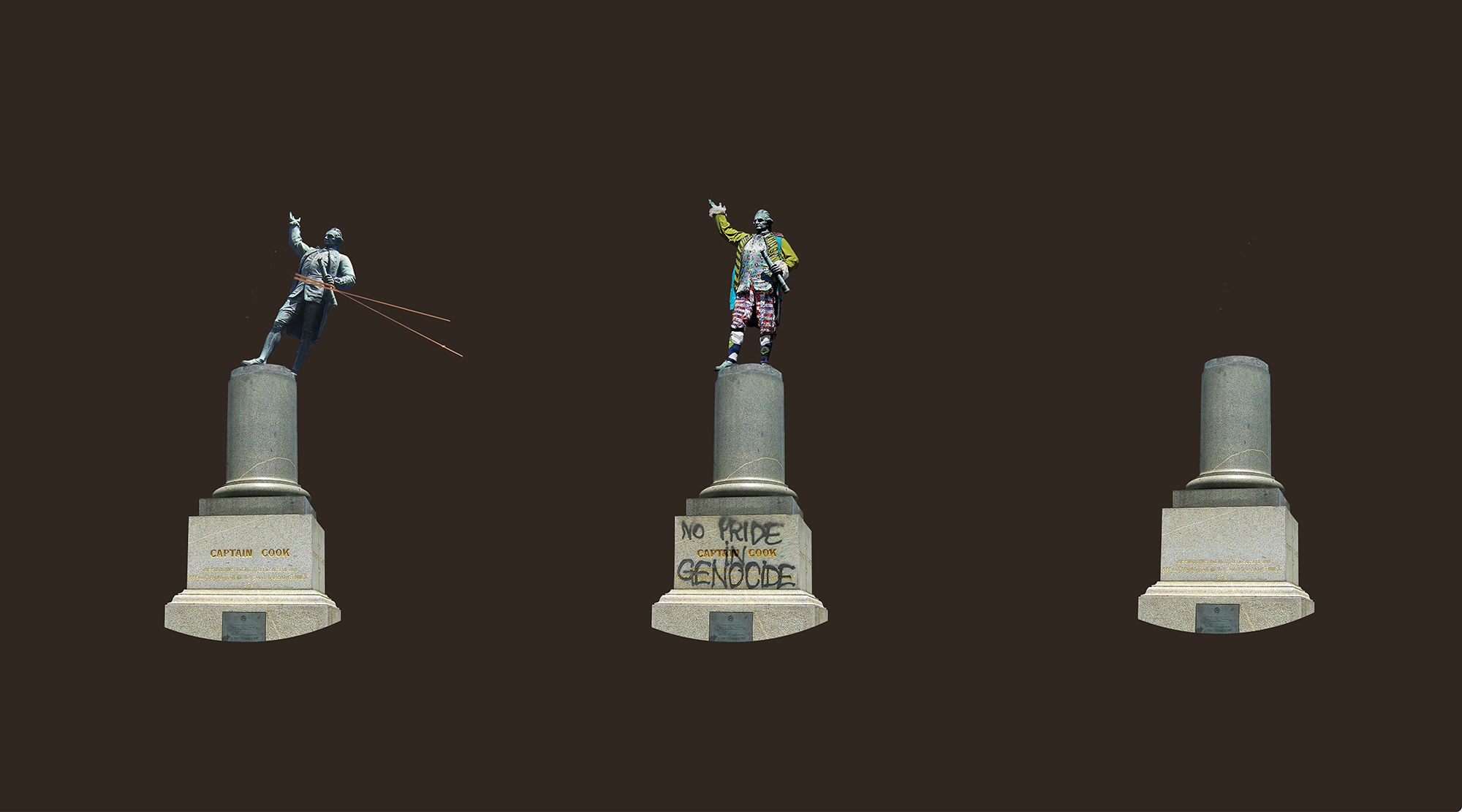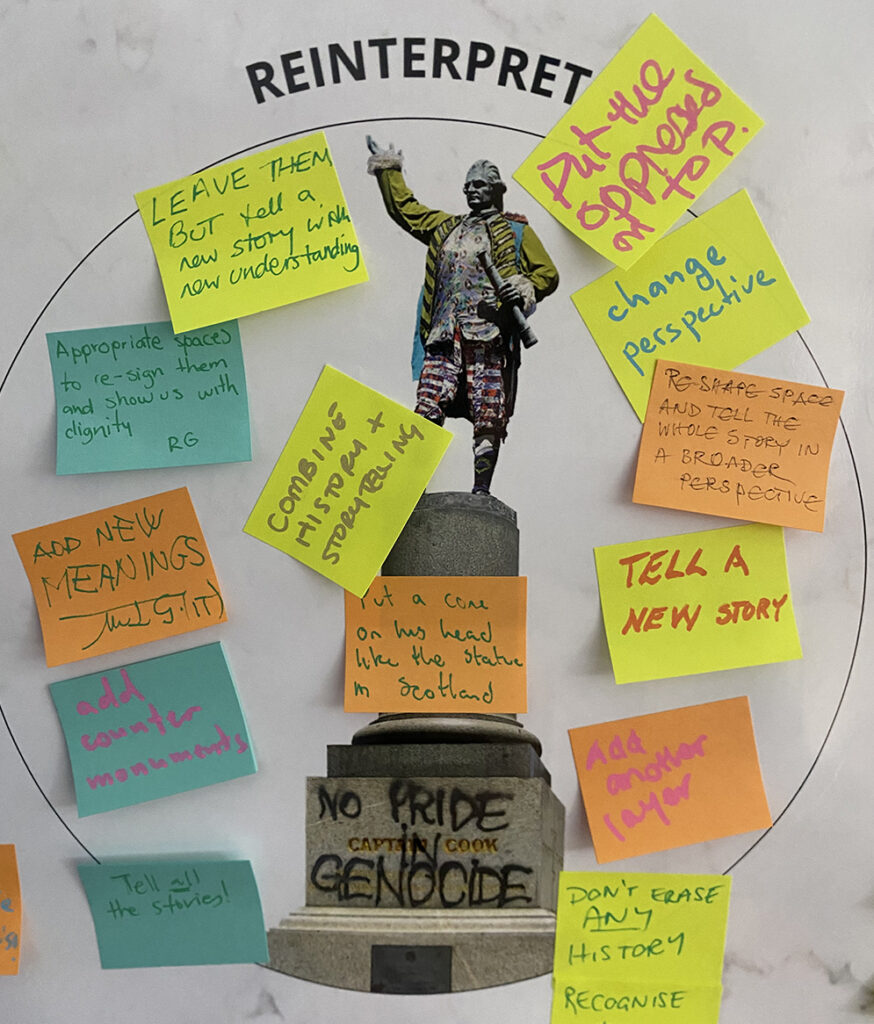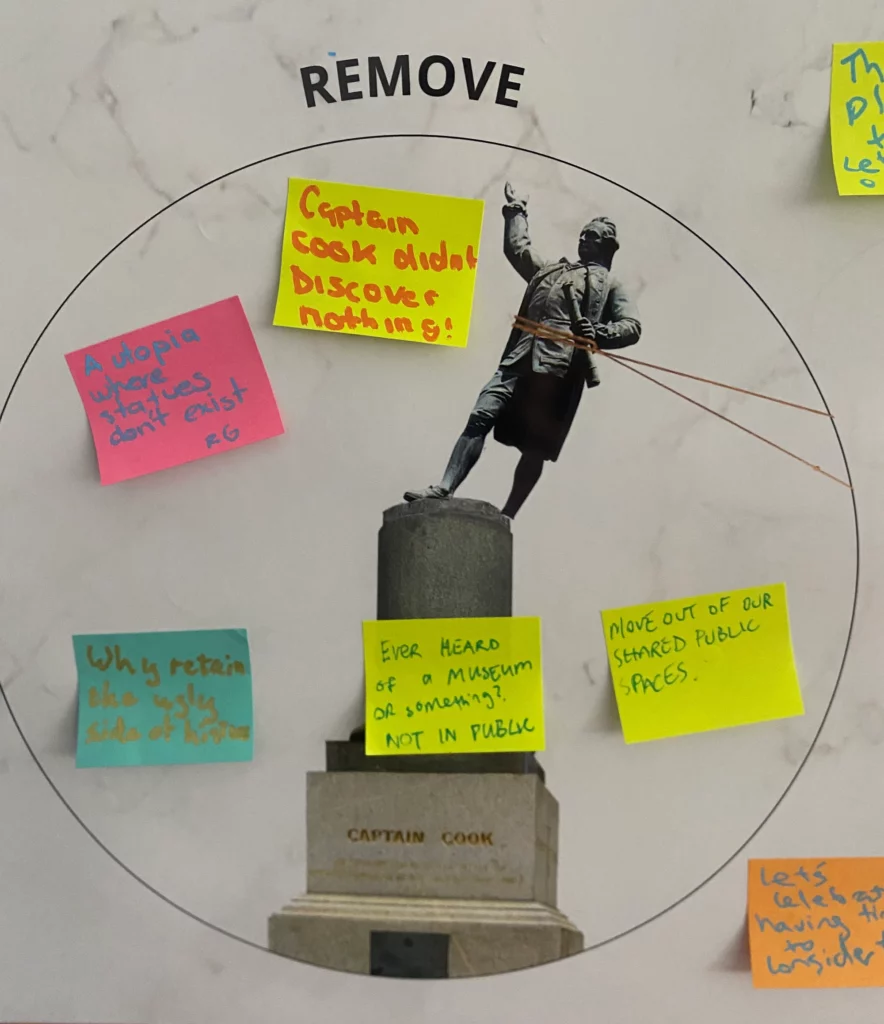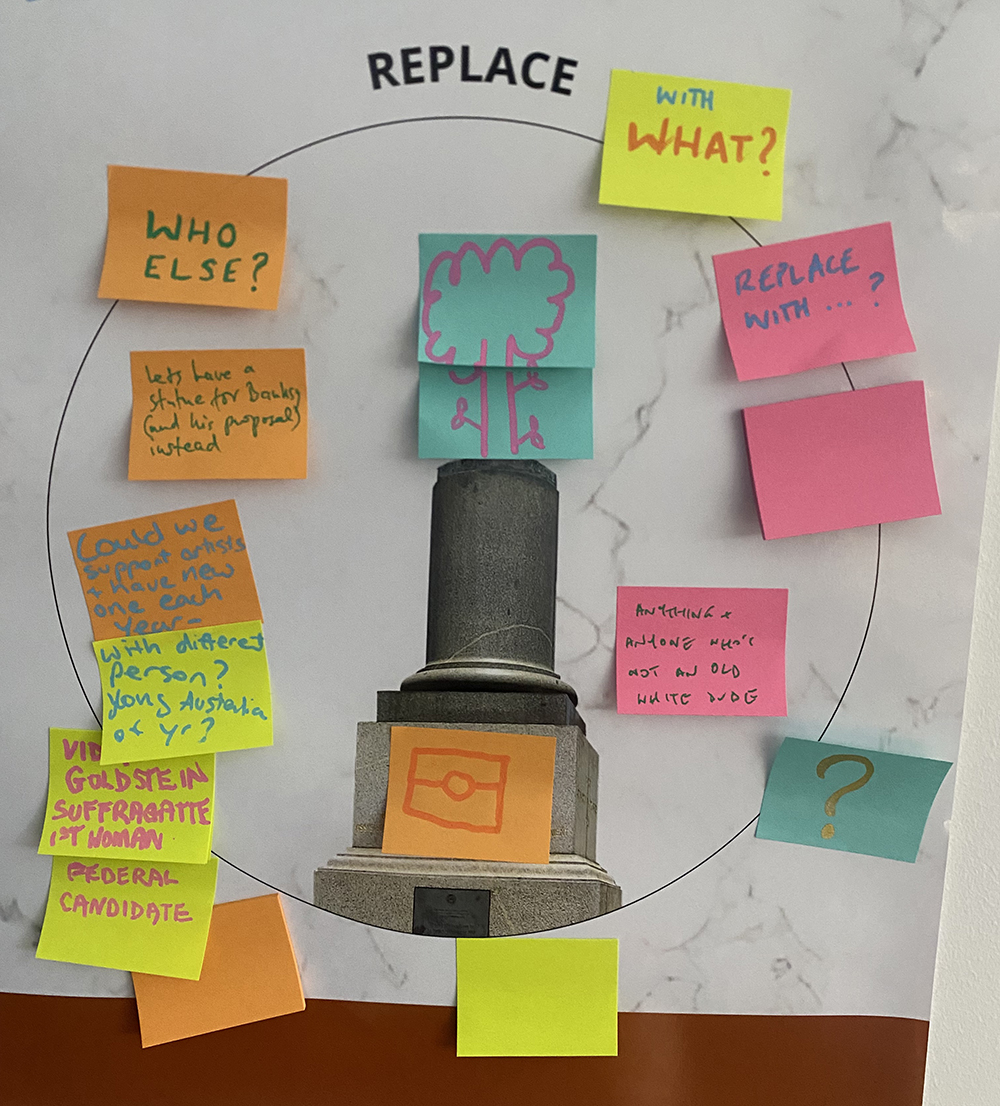
Statues: history or hindrance?
How do we respond to colonial statuary in Sydney today?
This question became especially pertinent during recent protests associated with the Black Lives Matter movement. Statues of people with links to slavery, colonialism, and white supremacy became lightning rods for protest, vandalism and destruction around the world. Acts of destruction were widely covered in the media while social media gave great energy to debates about the future of such monuments.
In Australia, the commissioning of bronze monuments proliferated in the Victorian era when the British Empire extended its influence. The period preceding the Great War is considered the ‘heyday’ of colonial statuary in many Australian cities. The three most commemorated men in NSW are Cook (28 statues), Governor Arthur Phillip (19) and John Oxley (18). In Sydney there are over 200 statues and only 6% are women, usually monarchs or symbols of liberty, freedom or hope. There are three dogs, a cat (Trim, Matthew Flinders’ cat) and a pig, Porcellino, in front of Sydney Hospital on Macquarie Street. There are, however, no public funded statues of Aboriginal people.
GML Heritage was a proud opal patron of this year’s ICOMOS General Assembly 2023. Our staff also contributed to a range of papers and posters throughout the symposium. Our poster Statues: History or Hinderance? was a provocation to delegates to question the ubiquitous colonial statues that surround us in the public domain.
We invited people to scrawl, graffiti or stick notes on the poster and tell us what they thought. Using the Captain Cook statue at Hyde Park as an example, we asked whether people felt he should be removed, reinterpreted or replaced. Delegates had playful and insightful things to say:
Replace Cook … with anything and anyone who’s not an old white dude
Reinterpret Cook … reshape the space and tell the whole story in a broader perspective
Put a cone on his head!
Ever heard of a museum? Not in public, move out of our shared public spaces.
Don’t erase any history, recognise and retain
Tell all the stories!
Of course, erecting more statues doesn’t solve the conundrum of how we celebrate or silence specific histories. Removing them is an important act of protest, but does it erase history? Perhaps ‘activating’ statues through public art or programming could stir new conversations about representation, belonging and memory.

Captain Cook dressed up (Costume by Ken Done, Eloise Rapp, Jenny Kee, Bronwyn Bancroft), No Pride In Genocide (The Sydney Morning Herald).


Delegates at the ICOMOS GA2023 shared their opinions.